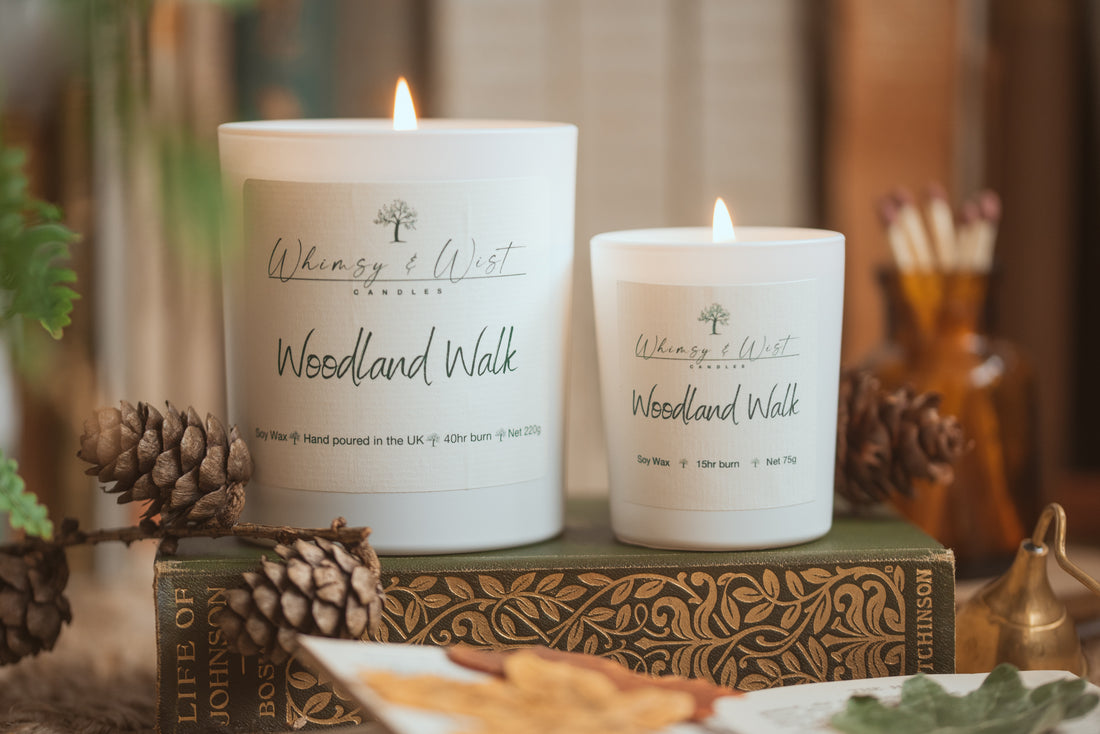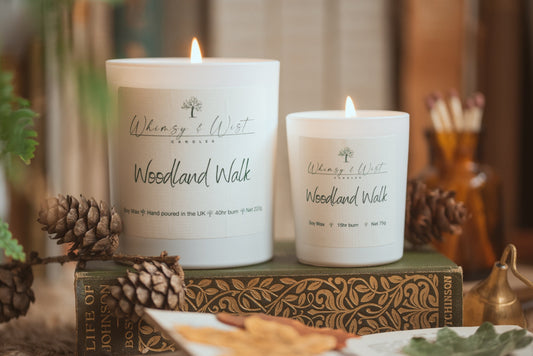
Are Candles Bad For You?
Are Candles Bad For You? Separating Fact From Fiction
Candles have long been a source of ambiance, relaxation, and even aromatherapy. However, if you've spent any time online lately, you may have come across articles and posts warning that candles are bad for your health. These claims often create unnecessary alarm, leaving many to wonder: Are candles bad for you? Are scented candles bad for your health? Are scented candles toxic? Let's explore these questions, debunk some myths, and explain why Whimsy & Wist Candles are a safe choice for your home.
Understanding Candle Ingredients and Their Impact
The key to determining the potential health effects of candles lies in understanding their ingredients. Here's a breakdown:
- Wax: The most common waxes used in candles are paraffin, soy, beeswax, and palm wax. Paraffin wax, derived from petroleum, can release volatile organic compounds (VOCs) when burned, which can contribute to indoor air pollution. Soy wax, beeswax, and palm wax are considered more natural and generally produce fewer VOCs, making them a healthier option.
- Scent: Fragrance oils, often synthetic, are added to candles to create their distinctive scents. While enjoyable, these fragrances can contain phthalates, which are known endocrine disruptors. Some individuals may experience allergic reactions or respiratory problems due to these chemicals.
- Wicks: Wicks are essential for burning the candle, but they can also release lead if made with a lead core. Lead is a neurotoxin and should be avoided. Look for candles with lead-free wicks, usually made of cotton or wood.
Common Myths and Misconceptions
Myth 1: ALL Candles Release Harmful Chemicals
One of the most widespread misconceptions is that all candles release harmful chemicals when burned. While it’s true that some candles can release tiny amounts of certain chemicals, not all candles are created equal. The type of wax and fragrances used in candles greatly impact their safety.
Myth 2: Paraffin Wax Candles Are Toxic
Paraffin wax, derived from petroleum, is often criticised for releasing potentially harmful substances when burned. While high levels of exposure to these substances can be harmful, the amounts released by a paraffin candle in a well-ventilated room are generally minimal. That said, it’s understandable why consumers are cautious.
Myth 3: Scented Candles Contain Toxic Fragrances
Another common concern is that scented candles contain toxic fragrances that can harm your health. This is where choosing the right candles makes a difference. Not all fragrances are harmful, especially when they are phthalate-free and made from safe ingredients.
Potential Health Risks Associated With Candles
While not all candles pose a significant health risk, certain factors can contribute to potential problems:
- Indoor Air Pollution: Burning paraffin candles can release VOCs, including benzene and toluene, which are linked to respiratory problems, headaches, and even cancer.
- Allergic Reactions: Fragrance oils can trigger allergies in sensitive individuals, causing symptoms like sneezing, coughing, and skin irritation.
- Respiratory Issues: Smoke from candles, especially those with strong scents, can irritate the lungs and exacerbate existing respiratory conditions like asthma.
- Lead Poisoning: Candles with lead-core wicks can release lead into the air, which can be particularly dangerous for children and pregnant women.
Why Whimsy & Wist Candles Are a Safe Choice
At Whimsy & Wist Candles, we take your health and well-being seriously. That’s why we’ve taken steps to ensure our candles are as safe and eco-friendly as possible:
1. Paraffin-Free: Our candles are made with 100% natural soy wax, which burns cleaner and longer than paraffin wax. Soy wax is a renewable resource and produces significantly less soot, ensuring a healthier environment for you and your loved ones.
2. Phthalate-Free: We use vegan, cruelty-free fragrance oils that are free from phthalates. Phthalates are often used in fragrances to extend their shelf life, but they can have harmful effects on your health. By choosing phthalate-free options, we prioritise your safety and the environment.
3. Cotton and Wood Wicks: Our wicks are either natural cotton or wood, with no lead core to ensure a toxin free burn.
Tips for Burning Candles Safely
While our candles are designed to be safe, it’s essential to follow some basic guidelines to ensure you enjoy them without any concerns:
1. Burn in a Well-Ventilated Area: Ensure there is good airflow in the room where you are burning the candle to avoid the buildup of any substances in the air.
2. Trim the Wick: Always trim the wick to about 1/4 inch before lighting your candle. This helps to reduce soot and ensures a cleaner burn.
3. Follow Burn Time Recommendations: Avoid burning candles for more than 3-4 hours at a time. This helps to prevent overheating and ensures an even burn.
4. Keep Away from Flammable Objects: Ensure your candle is placed on a stable surface and away from flammable materials.
5. Never Leave Unattended: Never leave a burning candle unattended. Always extinguish the candle when you leave the room or go to bed.
Conclusion - Choose wisely for peace of mind
So, are candles bad for you? When you choose high-quality, natural candles like those from Whimsy & Wist, you can enjoy the beautiful ambiance and delightful scents with peace of mind. Often, if a candle is cheap and mass produced, it is likely to be made with paraffin wax and cheaper fragrance oils, which may contain toxins. By choosing candles made with natural waxes and lead free wicks, as well as following safe burning practices, you can burn candles without worry. If in doubt, buy from a small business who made their candles by hand. They will be able to tell you exactly what ingredients are in the candles, so you can make an informed choice.



